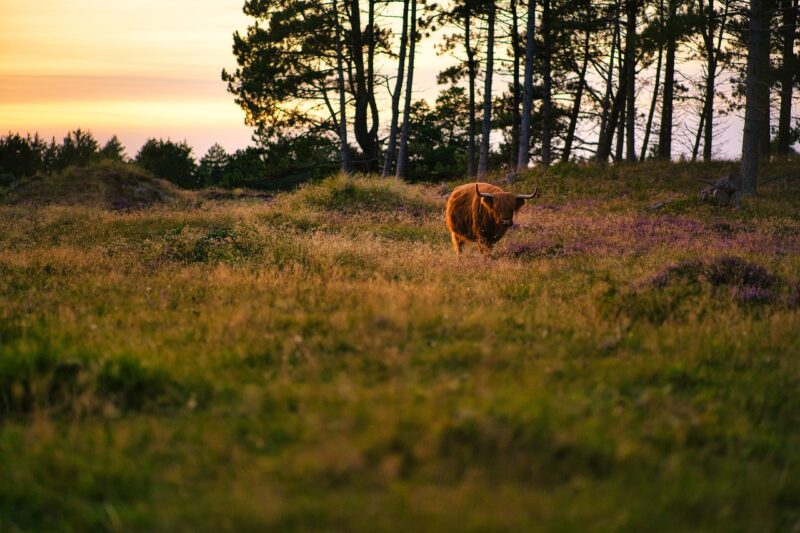How Rocky Mountain Oysters Became a Regional Delicacy
November 13, 2024

Rocky Mountain oysters, despite their jovial name, are a dish that elicits a mix of laughter, curiosity, and even a bit of horror among those unfamiliar with them. Essentially, they are not seafood at all, but rather the fried testicles of bulls, a dish deeply rooted in the culture and history of the American West. In this article, we will delve into the origins, preparation, and cultural significance of this unique delicacy that has become a staple in many Western states.
1. The Origins of Rocky Mountain Oysters
The term “Rocky Mountain oysters” first came into use in the late 19th century, coinciding with the westward expansion of cattle ranching. While the practice of eating bull testicles dates back to ancient times in various cultures, it was during the cattle drives in the American West that the dish took on its distinctive name. The first ranchers used everything from nose to tail, adhering to the principle of waste not, want not.
As cattle ranching flourished, particularly in states like Colorado, Montana, and Wyoming, the need for hardy meals became essential. Ranchers often faced harsh conditions, and utilizing every part of the animal was a necessity. Bull calves that did not make the cut for breeding were often castrated; rather than discard their testicles, ranchers began to cook and serve them.
2. Preparation and Cooking Techniques
Preparing Rocky Mountain oysters is an art unto itself, transforming what many view as a bizarre culinary choice into a flavorful delight. The preparation involves several steps:
- Cleaning: The first step is to remove the outer membrane. This is a delicate process where the testicles are peeled to expose the tender meat inside.
- Slicing: Once cleaned, the testicles are typically sliced into 1/4 inch rings or left whole for larger servings.
- Breading: The slices are then dipped in flour and cornmeal or a seasoned batter, providing a crunchy exterior that contrasts beautifully with the soft inside.
- Frying: Finally, they are deep-fried until golden brown, which gives them a crispy texture and rich flavor. Some chefs opt for pan-frying or grilling to introduce different flavors and textures.
Served hot with a side of cocktail sauce or ranch dressing, Rocky Mountain oysters can be a surprisingly delicious experience for adventurous eaters. Many restaurants even offer them as part of an appetizer platter during festivals and fairs.
3. Cultural Significance and Festivals
Rocky Mountain oysters have become a symbol of Western tradition, celebrated at various local festivals and events, proving the lasting cultural significance of this dish. Festivals like the annual “Testicle Festival” in Clinton, Montana, attract thousands of locals and tourists alike for music, entertainment, and of course, plenty of Rocky Mountain oysters to sample.
These events celebrate not only the food but the camaraderie that surrounds it. Many locals take pride in challenging visitors to try the dish, often resulting in humorous anecdotes and stories.
Moreover, Rocky Mountain oysters evoke a deeper connection to the ranching lifestyle and the resilience of those who pioneered the American West. To many, they represent ingenuity and resourcefulness in the face of scarcity—qualities that characterized the lives of early ranchers.
4. Popularity Beyond the West
While Rocky Mountain oysters are primarily associated with Western cuisine, they have gained popularity beyond state lines. As Americana and regional foods gain traction, especially through food television and social media, even adventurous eaters from across the United States, and even internationally, have become intrigued by this dish. Many culinary enthusiasts respond to the challenge of trying unique foods, making Rocky Mountain oysters a regional delicacy worth sampling.
Food bloggers and social media influencers have further propelled their popularity, showcasing various preparations and serving suggestions through engaging visuals and playful narratives. Online recipes have even surfaced to allow home cooks to try their hand at making Rocky Mountain oysters, expanding their reach across different dining experiences.
5. Nutritional Value and Health Benefits
For those who manage to overcome any initial hesitation about the dish, it’s worth mentioning the nutritional value of Rocky Mountain oysters. Rich in protein and essential nutrients, they can be a source of energy for those engaged in physically demanding activities, such as cattle ranching. However, like any fried food, they should be enjoyed in moderation.
The preparation of Rocky Mountain oysters typically involves frying, which increases the calorie count, yet they offer essential vitamins and minerals like:
- Vitamin B12 – crucial for energy production and neurological function.
- Zinc – supports immune function and has anti-inflammatory properties.
- Iron – essential for blood health and oxygen transport in the body.
When prepared responsibly and enjoyed as part of a balanced diet, Rocky Mountain oysters can fit into a healthy lifestyle, particularly for those with an adventurous palate.
Conclusion
Rocky Mountain oysters may seem unconventional, but they are a testament to the rich culinary history of the American West, showcasing a tradition of culinary creativity and community spirit. From their practical origins on the ranch to their status as a local delicacy celebrated at festivals, Rocky Mountain oysters embody a connection to cultural heritage.
For those feeling adventurous, trying Rocky Mountain oysters presents a flavorful journey into the heart of Western cuisine, revealing just how diverse and rich our culinary landscape truly is. So, the next time you find yourself in the Rocky Mountain region, don’t shy away from this unique dish—embrace the spirit of the West and discover the surprise that awaits within each crispy, golden bite.








